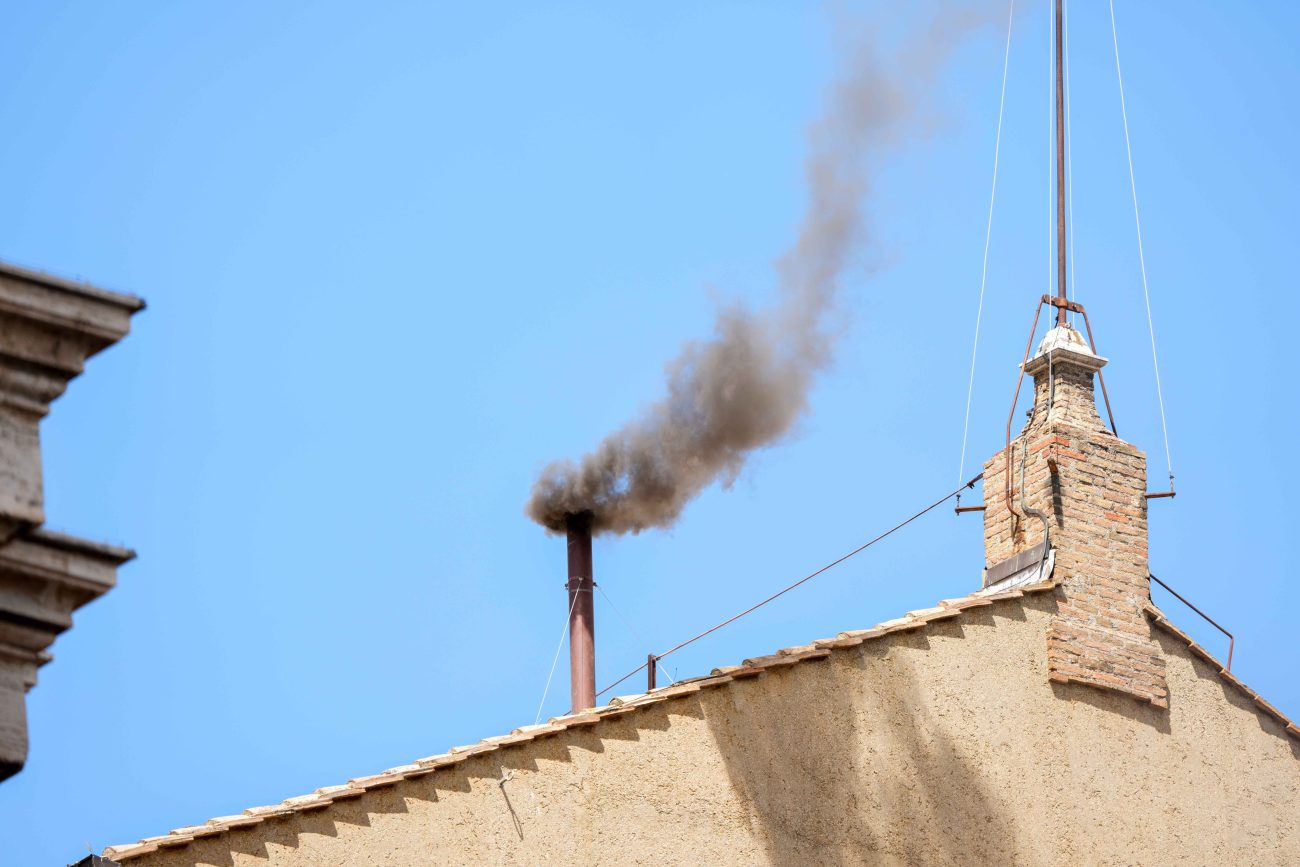VATICAN CITY (CNS) — The 133 cardinals who entered the conclave failed to reach a two-thirds supermajority of at least 89 votes to elect a new pope during their morning session May 8.
On the second day of voting, two rounds of ballots were scheduled: the first two in the morning after Mass and a brief prayer at 9:30 a.m. and then another two, if needed, after 4 p.m.
Thick plumes of black smoke appeared from a chimney on top of the Sistine Chapel at 11:51 a.m. to indicate no winners emerged during the morning session. A quick burst of applause broke out among the crowds that had gathered in the square when the smoke began to appear. An estimated 15,000 people were present.
A brief moment of confusion occurred when the black smoke died down and small wisps of white smoke came trailing out the chimney. White smoke as well as the triumphant ringing of the bells of St. Peter’s Basilica will signal that a pope has been elected. The bells instead were slowly ringing that it was noon.
While visitors hoping to see white smoke were disappointed, some were still thrilled to be there, including Tiffany and Brian from New York, who told Catholic News Service they were “happy enough to see just one” election result.
They had planned a vacation to Rome three months ago and were looking forward to seeing the Sistine Chapel. “But historically speaking, it’s just a privilege to be here. It’s really cool.”
When asked what kind of pope he would like to see, Brian, a Catholic, said the church and the world need “someone who can bring us all together,” which is already “the nature of the pope.”
“But, we need just leadership, I think, from all aspects: in Catholicism and in all levels of the world right now,” he said.
Kayla and Mohamed, a couple from the U.S. state of Virginia, said they had planned their trip to Rome in August 2024. Kayla, who said she was raised Catholic, said she was grateful to be in Rome at an “unprecedented time in history.”
“I’m actually trying to FaceTime my grandma, who is a devout Catholic. So, it’s very cool!” she said.
When asked who should succeed Pope Francis, Mohammed told CNS it should be someone similar to the late Pope Francis “with a similar message” because “the world is currently viewing things (in a way that is) quite opposite of that.”
After what was the cardinals’ third ballot for choosing who will be the 266th successor of Peter or the 267th pope, they broke for lunch and were expected to return to the Sistine Chapel at 4 p.m. to resume voting.
Pope Benedict XVI was elected on the fourth ballot of the 2005 conclave and Pope Francis was elected on the fifth ballot of the conclave in 2013.
The cardinal electors have been sequestered from the outside world, without internet access or cellphones, since 5:45 p.m. May 7 after they processed into the Sistine Chapel and the doors were closed. They listened to a meditation by 90-year-old Cardinal Raniero Cantalamessa and cast the first ballot of the conclave. Black smoke appeared at 9 p.m. local time. An estimated 45,000 people were gathered in the square.
With the largest number of cardinal electors ever to vote in a conclave, and therefore the most votes to count, the black smoke arrived two hours later than the expected 7 p.m. Rome time.
While only one ballot was cast on the first day of the conclave, up to four ballots are cast each day after that. If, after three days of voting, they have not elected anyone, the cardinals can take a maximum of one day off for prayer and informal discussion.
– – –
Contributing to this story was Junno Arocho Esteves at the Vatican.
PREVIOUS: Conclave: First Ballot Fails to Elect Pope
NEXT: Some Popes were Elected Unanimously, but ‘Acclamation’ Isn’t an Option Now




Share this story